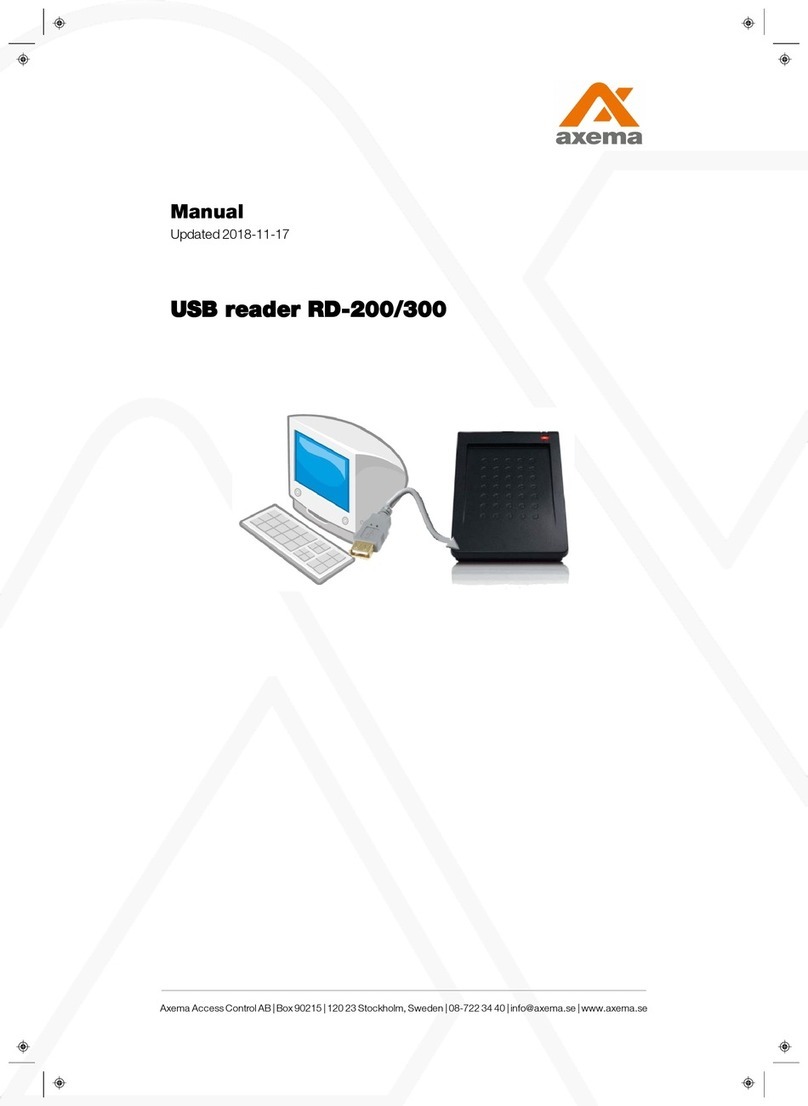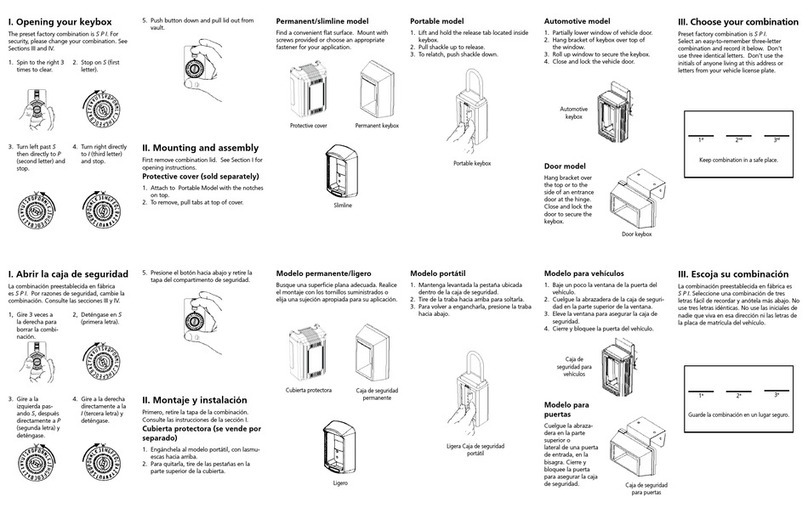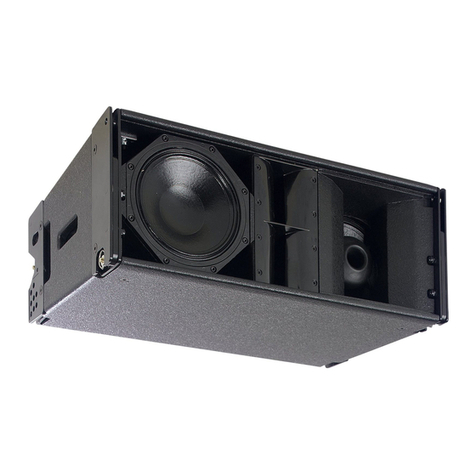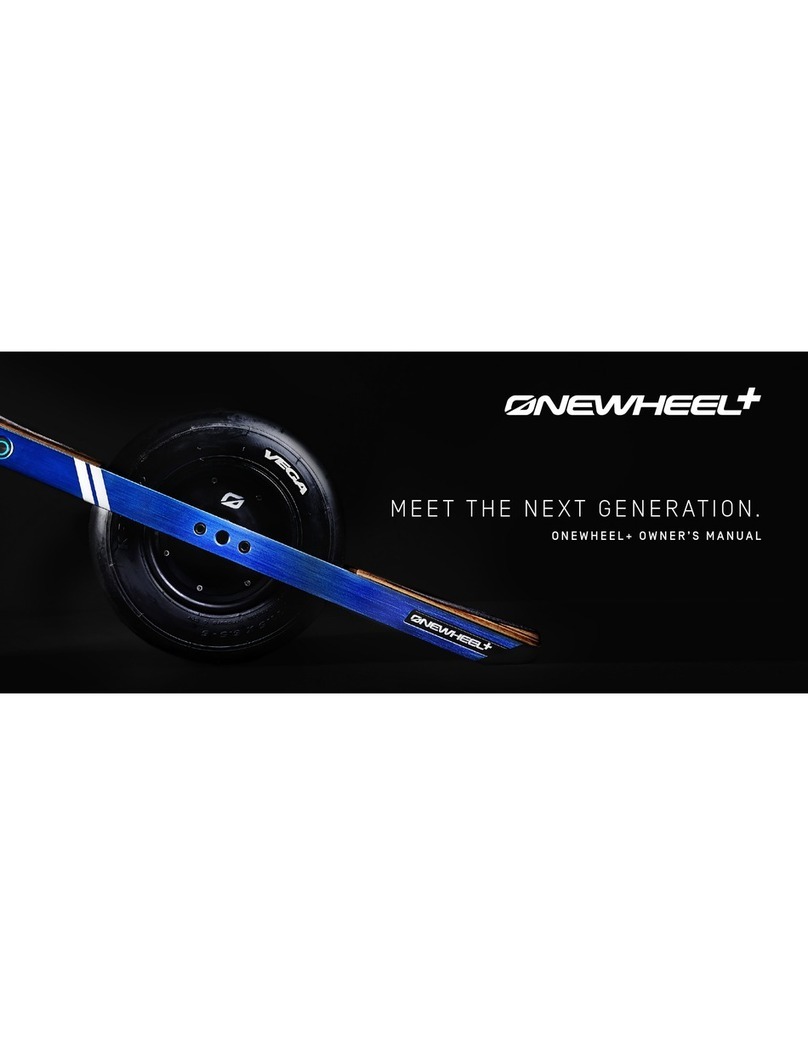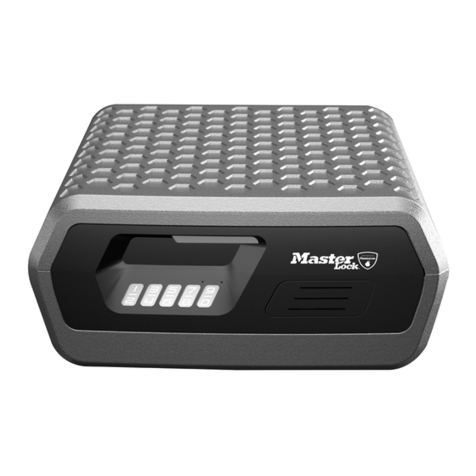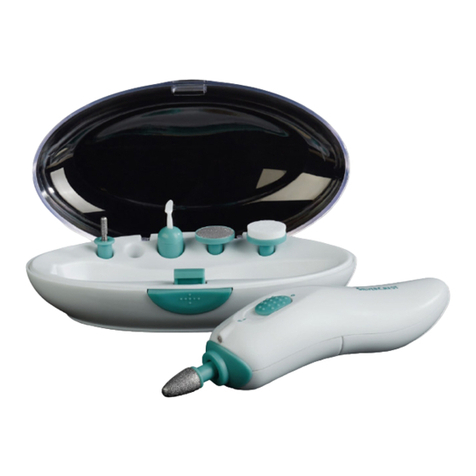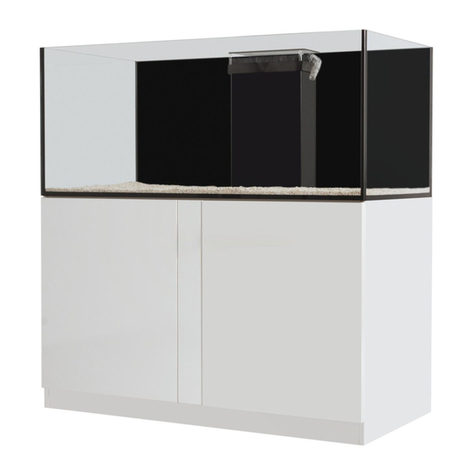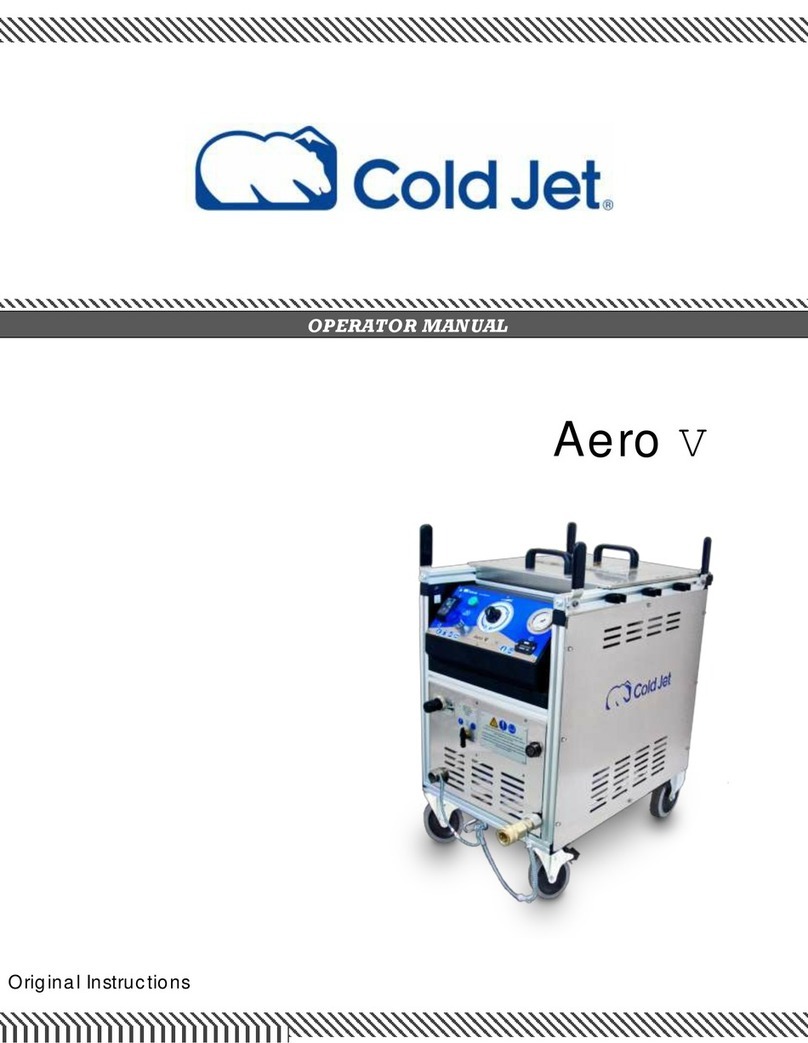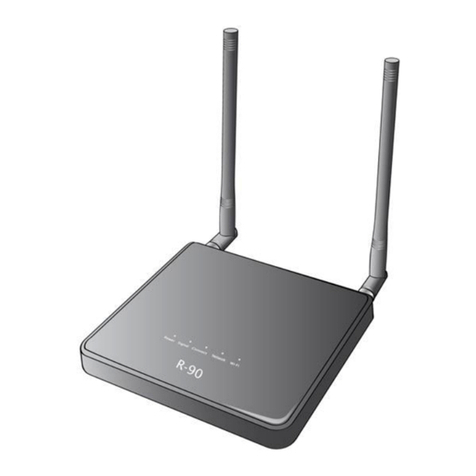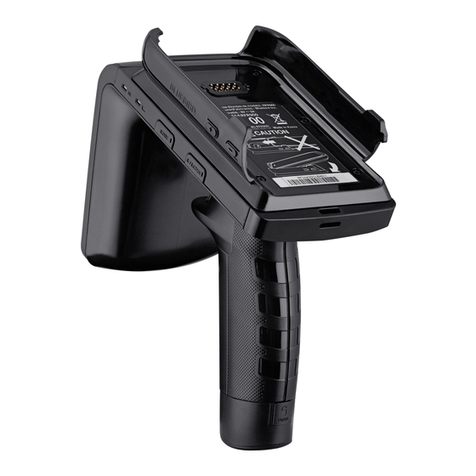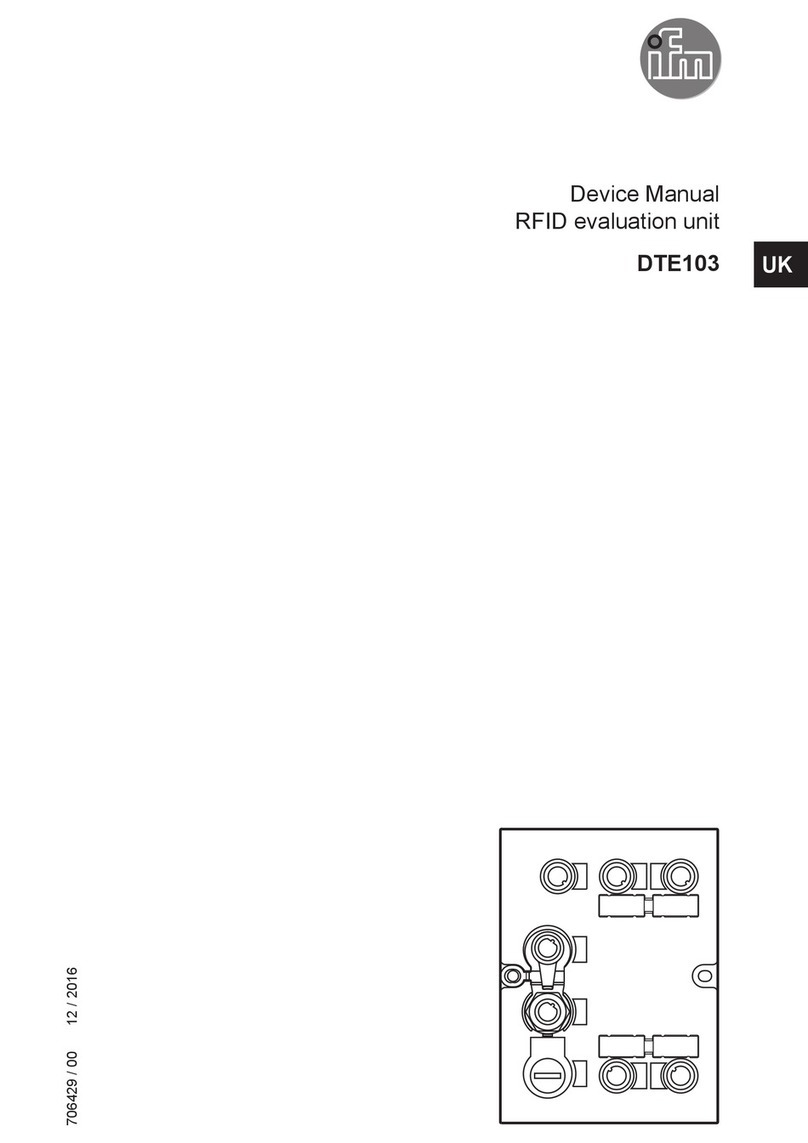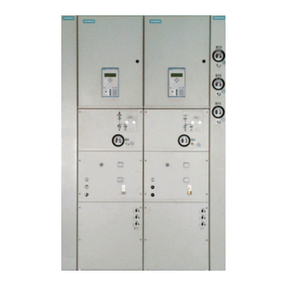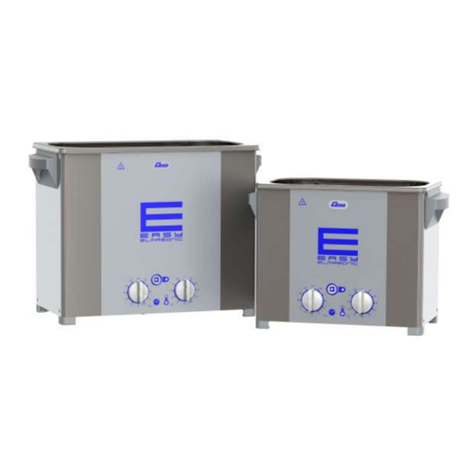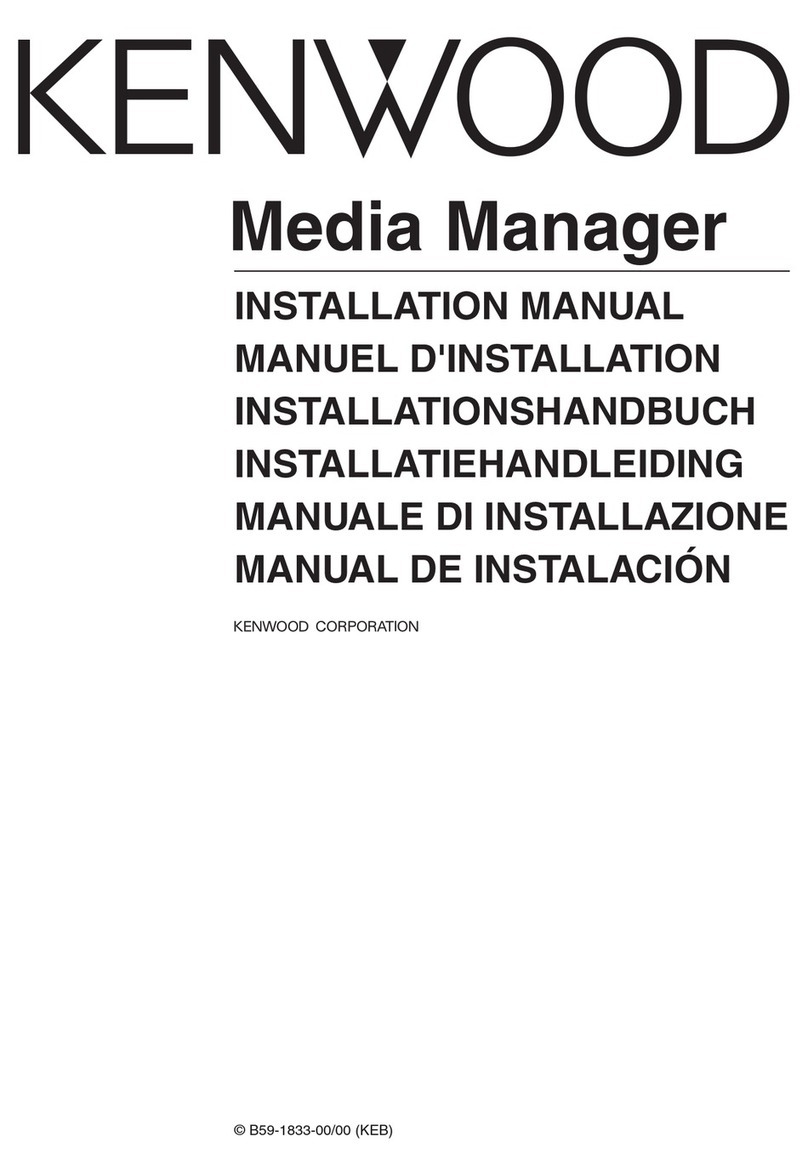Next Hydraulics MAXISTAB Specification sheet

INSTALLATION INSTRUCTIONSINSTALLATION INSTRUCTIONS
INSTALLATION INSTRUCTIONSINSTALLATION INSTRUCTIONS
INSTALLATION INSTRUCTIONS
USE AND MAINTENANCE MANUALUSE AND MAINTENANCE MANUAL
USE AND MAINTENANCE MANUALUSE AND MAINTENANCE MANUAL
USE AND MAINTENANCE MANUAL
Boretto Reggio Emilia Italy
Code MD.0.157GB
Rev 3
Edition 04/15


INDEX
FOREWORD ........................................................................................................................................... page1
MACHINE DIRECTIVE ................................................................................................................................ “ 2
REFERENCE NORMS ................................................................................................................................ “ 2
1 MAIN COMPONENTS AND TERMINOLOGY ............................................................................................... “ 3
2 CYLINDERS FIXING SYSTEMS .................................................................................................................. “ 3
3 CHOOSING THE STABILIZER .................................................................................................................... “ 5
4 CALCULATION OF THE MAXIMUM FORCE ALLOWED ON THE STABILIZER ........................................... “ 6
TABLE OF MAXIMUM FORCE RATES ALLOWED ON THE DIFFERENT “MAXISTAB” STABILIZERS ......... “ 7
5 SUPPLEMENTARY OUTRIGGERS INSTALLATION .................................................................................. “ 8
6 CHOOSING THE VERSION ....................................................................................................................... “ 9
INSTALLATION ON THE CHASSIS
INSTALLATION UNDER THE CHASSIS
7 FIXING SYSTEM BY CLAMP COLLAR FOR SERIES “ ML ” - ” 0 " - “ 1 ” - “ 2 ” - “ 3 ” ............................... “ 11
7.1 Supply conditions ....................................................................................................................................... “ 11
7.2 Fixing instructions ...................................................................................................................................... “ 11
7.3 Warnings and dangers ............................................................................................................................... “ 12
7.4 Periodical checkings.................................................................................................................................. “ 13
8 ASSEMBLING AND DISASSEMBLING OUTRIGGERS CYLINDERS SERIES “ 4 ”
STANDARD OR “ P ” VERSION WITH SYSTEM BY STOP RING .............................................................. “ 13
9 Modification of a stabilizer series “ 4 ” standard version into “ P ” version .............................................. “ 15
10 FIXING SYSTEM BY SPACER FOR OUTRIGGER CYLINDERS SERIES “ 5 ”, “ 6 ”, “ 7 ”, “ 8 ” ................. “ 15
11 SPECIAL VERSIONS AND OPTIONALS .................................................................................................... “ 16
11.1 “GIR” (tilting) version .................................................................................................................................. “ 16
11.2 Swivel foot kit .............................................................................................................................................. “ 16
11.3 Cylinders rod extensions ........................................................................................................................... “ 16
11.4 Dual side controls kit c/w valve bank ......................................................................................................... “ 17
12 HYDRAULIC CONNECTION OF “ MAXISTAB ” SUPPLEMENTARY OUTRIGGERS ................................. “ 18
12.1 Lock valves on outrigger cylinders ............................................................................................................ “ 18
12.2 Connection piping ...................................................................................................................................... “ 18
12.3 Prescriptions for “ MAXISTAB ” hydraulic system ...................................................................................... “ 18
12.3.1 Double on-line relief valve ......................................................................................................................... “ 19
12.4 Hydraulic scheme for manual extendable stabilizers c/w one valve bank function
and “T” connection between crane and additional stabilizers ................................................................. “ 20
12.5 Hydraulic scheme for manual extendable stabilizers c/w one valve bank function
and 5 ways/4 pos. diverter ......................................................................................................................... “ 21
12.6 Hydraulic scheme for hydraulic extendable stabilizers c/w one valve bank function
and two 5 ways/4 pos. diverters ................................................................................................................ “ 22
12.7 Hydraulic scheme for hydraulic extendable stabilizers c/w two independent 4 functions
valve banks (one for the crane and one for the additional stabilizers) .................................................... “ 23
12.8 Hydraulic scheme for manual extendable stabilizers c/w two independent 2 functions valve banks ... “ 24
13 HYDRAULIC CONNECTION OF THE ROD EXTENSION CYLINDERS
FOR MODELS “ 1 EHO “ – “ 2 EHO “ ........................................................................................................ “ 25
14 INSTRUCTIONS FOR FIXING AND CONNECTING THE KIT MICROSWITCHES FOR
NOT LOCKED EXTENDABLE RODS ......................................................................................................... “ 26
15 DECALS APPLICATION .............................................................................................................................. “ 27
16 STORAGE AND HANDLING INSTRUCTIONS ........................................................................................... “ 28
CAUTIONS TO OBSERVE .......................................................................................................................... “ 28
TABLE OF WEIGHTS W/O PACKING ......................................................................................................... “ 29
17 FINISHING AND PAINTING OF “ MAXISTAB ” STABILIZERS ..................................................................... “ 30
Via Mediterraneo, 6 - 42022 - Boretto - Reggio Emilia - Italy
Tel. +39 - 0522-96 30 08 - Fax +39 - 0522-96 30 39
- Installation instructions for supplementary outriggers -

18 STABILIZERS’ USER MANUAL .................................................................................................................. “ 31
18.1 Lateral extensions locking systems.......................................................................................................... “ 31
18.1.1 Manually operated lateral extensions ....................................................................................................... “ 31
18.1.2 Hydraulically operated lateral extensions ................................................................................................. “ 31
18.2 Operating instructions ............................................................................................................................... “32
18.2.1 General attentions ..................................................................................................................................... “ 32
18.2.2 Hydraulic stabilizer ..................................................................................................................................... “ 33
18.2.3 Manually tilting hydraulic stabilizer ............................................................................................................ “ 33
18.2.4 Automatically tilting hydraulic stabilizer ..................................................................................................... “ 34
18.3 Regular checks .......................................................................................................................................... “ 35
18.3.1 For all the models ...................................................................................................................................... “ 35
18.3.2 Stabilizer models “ML”, “0”, “1”, “2”, “3” ...................................................................................................... “ 35
18.3.3 Tilting legs models .................................................................................................................................... “ 35
18.3.4 Foot plates on stabilizer legs .................................................................................................................... “ 35
Via Mediterraneo, 6 - 42022 - Boretto - Reggio Emilia - Italy
Tel. +39 - 0522-96 30 08 - Fax +39 - 0522-96 30 39
- Use and maintenance manual -

SUPPLEMENTARY OUTRIGGERS
FOREWORD
This manual is to be considered as leading the choice and the correct installation
on trucks of the Maxistab range of supplementary outriggers.
Section 18 includes all the instructions for correct use and maintenance, so these
pages can be photocopied and included in the manual that the truck fitting work-shop
must consign to the end user according to CE Directives
ATTENTION!
Every modification or intervention on the base structures of MAXISTAB stabilizers
shall have to be agreed with and approved by Next Hydraulics’ Technical
Department.
Always reed carefully this manual and the “Installation Instructions” of vehicle’s
manufacturer before starting installation.
Next Hydraulics s.r.l. keeps the right to change its products at any moment without any
prior notice. Always make sure to be in possession of the latest release of this manual,
and that the prescriptions concerning the models involved in your installation are still in
force.
- 1 -
Via Mediterraneo, 6 - 42022 - Boretto - Reggio Emilia - Italy
Tel. +39 - 0522-96 30 08 - Fax +39 - 0522-96 30 39

- Installation instructions for supplementary outriggers -
Via Mediterraneo, 6 - 42022 - Boretto - Reggio Emilia - Italy
Tel. +39 - 0522-96 30 08 - Fax +39 - 0522-96 30 39
- 2 -
MACHINE DIRECTIVE
All the equipments sold within the European Union’s territory must fulfil the regulations of the 2006/42/EC Directive
(MACHINE DIRECTIVE) in the version in force.
Therefore, each Maxistab stabilizer is fitted with the safety devices required, it bears a plate carrying the CE mark
in a visible position, and is delivered accompanied by relevant Conformity Declaration.
The installer carrying out mounting, by incorporating the Maxistab stabilizer in the vehicle, produces a new machine:
crane (or others) on a vehicle, ready to be put into service. Therefore, he becomes the manufacturer of this new
machine, and must comply with the Directive’s provisions concerning design, building, safety in functioning and use.
He must keep all of this recorded in the Technical Dossier he is compelled to draw up.
After making sure, by proper tests and practical exams, of the correspondence to the requirements, the installer
places his own CE plate, and releases his own Conformity Certificate.
NOTE
We remind that the non-fulfilment to the above involves, in case of accidents:
-criminal sanctions
-fines (compensation for economic damage caused by defective product)
-withdrawal from the market of the machine itself, and in case also of others of the same series.
REFERENCE NORMS
Directives 2006/42/EC.
Norm EN 12999 in the version in force.
Norm CUNA NC 034-05 (Release 1984), Norm DIN 15019.
INSTALLATION AND MOUNTING INSTRUCTIONS, from Manufacturers of various industrial vehicles.
Use manuals of hydraulic hoses, from various Manufacturers.
Use manuals of hydraulic steel pipes and fittings, from various Manufacturers.
Use manuals of pumps and PTO’s, from various Manufacturers.

- Installation instructions for supplementary outriggers -
Via Mediterraneo, 6 - 42022 - Boretto - Reggio Emilia - Italy
Tel. +39 - 0522-96 30 08 - Fax +39 - 0522-96 30 39
Pict. 3
5
4
3
2
1
6
1 - MAIN COMPONENTS AND TERMINOLOGY
The stabilizer is made of the following parts and main components:
(see Pict. 1)
1) Main beam
2) Extendable rod
3) Cylinder sleeve
4) Stabilizer cylinder
5) Foot plate
6) Rod extension cylinder
7) Lock valve
8) Lock assembly for rods
2 - CYLINDERS FIXING SYSTEMS
Fixing system by clamp collar
(Series 0/ML)
(see Pict. 2)
1) Clamp collar
2) Tightening nut
3) Hook
4) Fastening screw
5) Cylinder sleeve
Fixing system by clamp collar
(Series 1, 2, 3)
(see Pict. 3)
1) Clamp collar
2) Tightening nut
3) Hook
4) Screw eye
5) Lock nut
6) Cylinder sleeve
Pict. 1
Pict. 2
5
3
4
2
1
8
7
1
6
2
3
4
5

- Installation instructions for supplementary outriggers -
Via Mediterraneo, 6 - 42022 - Boretto - Reggio Emilia - Italy
Tel. +39 - 0522-96 30 08 - Fax +39 - 0522-96 30 39
- 4 -
Fixing system by stop ring
(Series 4)
(see Pict. 4)
1) Stop ring (stop round bar)
2) Cylinder sleeve
3) Slit
4) Cylinder groove
5) Hooking hole
6) Security dowel
Fixing system by spacer
(Series 5, 6, 7, 8)
(see Pict. 5)
1) Spacer
2) Plate
3) Ring nut
4) Security dowel
5) Cylinder sleeve
Pict. 5
Pict. 4
NORMAL "P" VERSION
3
2
1
4
5
3
6
1
45
2

- Installation instructions for supplementary outriggers -
Via Mediterraneo, 6 - 42022 - Boretto - Reggio Emilia - Italy
Tel. +39 - 0522-96 30 08 - Fax +39 - 0522-96 30 39
3 - CHOOSING THE STABILIZER
The MAXISTAB range of stabilizers is additional for cranes which already have their own stabilizers,
when the stability of the vehicle is not sufficient.
In case the vehicle on which a crane is installed is smaller than the minimum vehicle foreseen by the
manufacturer for that kind of crane, it will be necessary to install an additional stabilizer.
The choice of the additional stabilizer is to be made according to two main factors:
1) The stability checking of the vehicle with crane at full load and in the most unfavourable conditions
2) The maximum force which has to be borne by the additional stabilizer.
Each crane manufacturer gives some
indications, which you can refer to, for
the stability calculation of the vehicle
with crane installed.
In case of use or installation as main
stabilizer near to cranes, aerial
platforms or for other employments, in
order to guarantee the stability of the
vehicle, the installer has to calculate
the stability of the system and the
actual stress the stabilizer will be
subjected to, by following the
calculation systems imposed by the
regulations in force, and making sure
that the max. stress borne by the
stabilizer is lower than the rates
indicated in the table at page 7.
Anyway, in the MAXISTAB range you
can choose among the following
stabilizer models:
- fixed (F)
- extendable with opposite rods
(EMO/EHO)
- extendable with side-by-side rods
(EMA/EHA/ELHA)
- extendable with two telescopic extensions each side (EXHA/EXPHA)
(see Pict. 6).
As far as the choice of stabilizer size or type according to crane lifting moment is concerned, it is
important to remember that the moment rates mentioned in the range brochure are only an indication,
as they cannot consider the real distance of the stabilizer from the crane, or the actual dynamic moment
of the crane itself.
Therefore, in order to make a correct choice, please follow the calculation system shown at page 6.
Type "F"
Pict. 6
Type "EMO"
"EHO"
Type "EMA"
"EHA"
Type "EXHA"

- Installation instructions for supplementary outriggers -
Via Mediterraneo, 6 - 42022 - Boretto - Reggio Emilia - Italy
Tel. +39 - 0522-96 30 08 - Fax +39 - 0522-96 30 39
- 6 -
4 - CALCULATION OF THE MAXIMUM FORCE ALLOWED ON THE
STABILIZER
1) Column axle offset from the middle
of the vehicle to the left or to the
right (cm)
2) Longitudinal distance from column
centre to the middle of the
additional stabilizer, or to the
middle of the closest stabilizer
cylinder in case of stabilizer with
side-by-side rods (cm)
3) Maximum dynamic moment of the
crane stated by its manufacturer
(daNm).
Filing up the two equations in pict. 7
with the above data, the maximum
force allowed on the cylinder is drawn.
Compare such data with the attached
table of maximum allowed force rates,
and check that it is lower, i.e.:
R max < R allowed
If not so, repeat the calculation after
increasing the stabilizer distance from
the crane (if possible), or choose a
stabilizer with a bigger spread, or opt
for the stabilizer with the immediately
higher capacity.
Pict. 7
H (cm) = (C/2-S)2+L2
Rmax(daN) =
Where: M max. (daNcm) = Max. dynamic crane moment
C (cm) = Max. spread of additional stabilizer
L (cm) = Longitudinal distance between column axle
and additional stabilizer
H
M max

- Installation instructions for supplementary outriggers -
Via Mediterraneo, 6 - 42022 - Boretto - Reggio Emilia - Italy
Tel. +39 - 0522-96 30 08 - Fax +39 - 0522-96 30 39
TABLE OF MAXIMUM FORCE RATES ALLOWED ON THE DIFFERENT “MAXISTAB”
STABILIZERS
ML-F 2400 5300 3 EHA 10500 23100
ML-E 1560 3450 4 EHA 14000 30800
0 F 3000 6600 5 EHA 17750 39000
0 EMO 3000 6600 5 ELHA 19700 43300
1 F 6300 13850 5 EXHA 17800 39100
1 EMO 6300 13850 5 EXPHA 15000 33000
1 EHO 6300 13850 6 EXHA 21500 47300
1 EMA 6150 13550 6 EXPHA 19000 41800
1 EHA 6150 13550 7 EXPHA 25000 55000
2 F 8250 18150 8 EXPHA 28000 61600
2 EMO 9000 19800
2 EHO 9000 19800
2 EMA 9000 19800
2 EHA 9000 19800
ATTENTION!
Please remember that the rates mentioned in this table concern the structural resistance of the stabilizer,
and do not consider the consistency of the ground on which the vehicle has to work. Especially for those
stabilizers whose max. allowed force is very high, we suggest always to foresee during the installation a
housing where to store two outrigger pads for weight distribution with proper surface and resistance, as
well as to prescribe their use to the customer in the Technical Booklet.
TYPE R allowed
(daN) (Lbs) TYPE R allowed
(daN) (Lbs)

- Installation instructions for supplementary outriggers -
Via Mediterraneo, 6 - 42022 - Boretto - Reggio Emilia - Italy
Tel. +39 - 0522-96 30 08 - Fax +39 - 0522-96 30 39
- 8 -
Pict. 9
Pict. 8
Opening for
stabilizer
Chassis
5 - SUPPLEMENTARY OUTRIGGERS INSTALLATION
The supplementary outriggers can be installed in the following ways:
On the chassis
by welding the stabilizer to the edge of
the counter-frame, or by cutting the
same and inserting the stabilizer in an
opening made in a middle point of the
counter-frame itself.
At this stage it will be necessary to fix
adequately the counter-frame and the
stabilizer to the vehicle chassis by side
plates and fixing screws.
(see Pict. 8)
Under the vehicle chassis
In this case, the stabilizer is to be fixed
to the chassis and the counter-frame
by means of brackets welded to the
stabilizer itself, with counter-plates to
be fixed by screws to the chassis or
the counter frame.
It is important that the stabilizer leans
against the chassis without clearance
and in vertical position. The chassis
must be reinforced by a suitable
counter-frame supporting the same
according to the indications of the
crane or the vehicle manufacturer.
(see Pict. 9)
Apart from the solution chosen, the
stabilizer installation must always fulfil
the following essential conditions:
Counter-frame
Piping side

- Installation instructions for supplementary outriggers -
Via Mediterraneo, 6 - 42022 - Boretto - Reggio Emilia - Italy
Tel. +39 - 0522-96 30 08 - Fax +39 - 0522-96 30 39
a) the manually operated pins and hookings, the extendable rod handles, the levers of the manual
lock valves are always to be easily accessible, and their operation must entail no risk for the user
b) the hydraulic hoses close to the operator must always be properly protected and shielded
c) check that there are no piping or wires pending or protruding under the stabilizer, with following
risk of entangling when travelling. When necessary, collect them by means of clamps, sheaths,
etc., and fasten them properly to some fixed parts
d) for hydraulic extendable stabilizers, make sure of the correct functioning of the side extension
system, and check in particular that the mobile parts (such as rods, piping, wires, etc.), when
moving, do not interfere of get entangled with other fixed parts of the vehicle or the stabilizer
e) for the manually tilting stabilizers, make sure that relevant operations can be easily and safely
carried out.
6 - CHOOSING THE VERSION
According to the type of installation adopted, you have to choose the right version of additional stabilizer.
INSTALLATION ON THE CHASSIS
If the installation is to be made on the chassis, normally you choose stabilizers with standard or long
stabilizer cylinders. Only in exceptional cases you will have to choose the “S” versions with short cylinders.
From series ML/0 up to series 3
The stabilizers in “K” version from series ML/0 up to series 3, which are already shipped in standard
version, checking excepted, are ready for installation.
In case, when extending the rods, the cylinder or the fitting protection interfere with the body side box, it
is possible to lower the cylinder, keeping it aligned in the upper part of the cylinder sleeve, as mentioned
in § 7.3 (Pict. 14).
Series 4
For the stabilizers of series 4it will be necessary to check if you require the “S” version with short
cylinders, or the standard version, by looking at the sizes of each type in the catalogue.
Series 5-6-7-8
For the stabilizer series 5-6-7-8 type EXHA or EXPHA, first it will be necessary to check if you have to
use the “S” versions with short cylinders, or the “L” version with long ones. Then, in case, you can
consider the AR versions (to be always originally ordered), which make the stabilizer cylinders move
200mm downwards.
For the models 5 EHA – 5 ELHA, which can be supplied both in “S” or “L” version too, the AR option (to
be always originally ordered) makes the stabilizer cylinders move upwards of about 60mm, and
consequently it is more suitable for installation under the chassis.
INSTALLATION UNDER THE CHASSIS
In case you wish to install the stabilizer under the chassis, you will have to make your choice in the
following way, according to the different fixing systems foreseen for stabilizer cylinders.

- Installation instructions for supplementary outriggers -
Via Mediterraneo, 6 - 42022 - Boretto - Reggio Emilia - Italy
Tel. +39 - 0522-96 30 08 - Fax +39 - 0522-96 30 39
- 10 -
From series ML/0 up to series 3
Stabilizers series ML-0-1-2-3: you will have to choose among the several versions according to the
length of the cylinders, which anyway will have to be moved upwards by following the instructions at § 7.
The installer will have to secure again the clamp collars in the position suitable to allow the stabilization,
and to prevent cylinders interference with the body side boxes during the extension operation.
Series 4
Stabilizers series 4: you will have to choose a stabilizer in “P” version with standard or short (“S”)
cylinders, checking that the size “R” and the stroke “E” in the catalogue allow the correct stabilization.
On request before ordering, it is possible to have the cylinders in a 100 mm lower position compared to
the size “R” in the catalogue.
Check that the size “U” does not cause interferences of the cylinder with the body.
Sometimes it could be necessary to consider the AR (overturned rods) version, which allows to move
the cylinder more upwards, in case you need to recover some space from the ground, and the room
above the stabilizer makes this operation feasible.
Series 5-6-7-8
Except for special cases, in this type of application you have to use the versions ****/S-P, which grant
the min. dimensions under the vehicle chassis (size “R”).
The AR option (to be always originally ordered) moves the cylinders 200mm downwards in models
*EXHA - *EXPHA in comparison to the corresponding standard version.
For models 5 EHA – 5 ELHA the AR option (to be always originally ordered) moves the stabilizer cylinders
60mm upwards in comparison to the corresponding standard version.
All these different possibilities grant innumerable combinations of application features, which make the
product suitable for the most various requirements.
In some cases you could use the “S” versions as well for installation under the chassis, in the presence
of vehicles with considerably high frames.
Arrangement of supporting tubes for hoses, on models from 1EMA
to 5 EHA
The standard, ex works, arrangement for the stabilizer
cylinders, their hoses and supporting tubes, is shown on
pict. 10A. When is necessary to move the cylinders
upwards, the supporting tubes must be modified to
enable the repositioning of the cylinders and their hoses
to run and move free of any obstruction.
Procedure:
¾Loose the anti-rotating lock (1) of the cylinder.
¾Rotate the cylinder toward the outer side of the beam,
until the supporting tubes (2) and relevant hoses enable
the cylinder itself to be moved upwards freely, without
getting stuck on the outer part (3) of the main beam.
¾Put a mark on the supporting tube, on point (4) where
the tube will be bent, then measure with a a goniometer
the bending angle required to bring the tube parallel to
the main beam in the new required configuration (ref
pict. 10B).
¾Disassemble the supporting tube from the valve, by
loosening bolts (5).
¾Bend the tube at the required angle, then mount it again
on the valve and secure the hoses to it.
¾Repeat procedure on each side of the stabilizer. Pict. 10
2
3
4B
1
5
A

- Installation instructions for supplementary outriggers -
Via Mediterraneo, 6 - 42022 - Boretto - Reggio Emilia - Italy
Tel. +39 - 0522-96 30 08 - Fax +39 - 0522-96 30 39
7 - FIXING SYSTEM BY CLAMP COLLAR
FOR SERIES “ML” – “0” – “1” – “2” – “3”
7.1 Supply conditions
The stabilizer is supplied with outrigger cylinders already fixed in the position
shown in Pict. 11, and locked in a way which does not require any
further operation to be carried out by the installer, in case such position
is suitable for the type of mounting.
IMPORTANT
Should cylinder position need to be different, the installer
must conform scrupulously to the below described instructions
7.2 Fixing instructions
In case you want to change cylinder position in comparison to the
one it has been supplied in, first of all you have to unscrew the lock
nut (1) (Pict. 12) of the fall and slewing preventing system; therefore
it is necessary to pay attention to the accidental and uncontrolled
descent of the cylinder itself, which may cause limbs crushing.
Concerning cylinders of series “0”/”ML”, please refer to Pict. 12a.
-Unscrew the locking screw (2) of the clamp (3), and pull it out,
consequently releasing also the coupling (4).
-In order to open wide the collar, you have to screw the screw
(2) from the threaded side (Pict. 13), placing a shim or the
coupling itself in the split.
-Let the collar slide up to the desired position, and lock it
unscrewing the screw previously fitted in.
-Put the screw (2) back into its original position, slipping it into
the hole of the adjustable coupling (4) inserted in the split.
Let the cylinder slide upwards (Pict. 14), until the collar leans against
the cylinder sleeve, so that the threaded shank of the coupling (4)
slips into the eyelet (5), and can be locked by tightening the lock nut
(1).
Pict. 11
Pict. 12
Pict. 12a
1
5
4
3 2
4
1
3 2

- Installation instructions for supplementary outriggers -
Via Mediterraneo, 6 - 42022 - Boretto - Reggio Emilia - Italy
Tel. +39 - 0522-96 30 08 - Fax +39 - 0522-96 30 39
- 12 -
- Tighten slightly the screw (2), paying attention that the collar is
completely leaning to the below part of the cylinder sleeve, in
case helping by some slight rebound-proof mallet strokes.
- Then tighten definitively the screw by the torque wrench to the
driving torque shown in the proper table (Tab. 1).
Stabilizer Cylinder Screw type Wrench Driving torque
model diameter(mm) (mm) (mm) daN-m Lbs-ft
GR. 0/ML 70 TCEI M12 10 12 85
cl. 12.9
Gr. 1 85 TCEI M14 12 20 145
cl. 12.9
Gr. 2 / Gr. 3 95 TCEI M16 14 30 220
cl. 12.9
7.3 Warnings and dangers
1. The non-respect of tightening torques puts at risk stabilizer’s
safety. Before tightening, check that the screw
and its threaded hole made in the collar are
degreased and clean.
2. Check that in the new working position chosen,
the stabilizer cylinder is still correctly housed
into its cylinder sleeve. That happens when the
cylinder leans on both centering bands made
inside the sleeve (Pict. 15).
3. If during the above operations the sharp profiles
made in the internal cylindrical surface of the
collar are accidentally damaged, take care of
replacing the collar by a new one.
4. The collar must not be welded in any way.
5. The prescription decal, indicating the obligation
to use the torque wrench, and the driving torque
value, is to be applied near the collar after the
installation is finished, and anyway after painting,
so that it is completely visible.
Pict. 13
Pict. 14
Pict. 15
YES NO
Table 1

- Installation instructions for supplementary outriggers -
Via Mediterraneo, 6 - 42022 - Boretto - Reggio Emilia - Italy
Tel. +39 - 0522-96 30 08 - Fax +39 - 0522-96 30 39
7.4 Periodical checking
- Weekly:
Carry out a visual checking making sure that the cylinders did not move upwards or that, with
cylinders in transport position, there is no clearance between the locking collar and the sleeve; in
case one of the above situations occurs, have screw tightening checked by an authorized workshop.
- Yearly:
Have screw tightening checked by an authorized workshop and, if necessary, restore it tightening
by torque wrench, according to what shown in Tab. 1.
Each operation beyond what described has always to be approved by Next Hydraulics’ Technical
Department, whom you have to apply to for any clarification and further information required.
8 - ASSEMBLING AND DISASSEMBLING OUTRIGGER CYLINDERS SERIES “4”
STANDARD OR “P” VERSION WITH SYSTEM BY STOP RING
Assembly (see Pict. 16-17)
STEPS
1) Take the new stop round
bar (1) and bend it slightly
close to the hooking notch
(drawing)
2) Grease by a brush the
cylinder sleeve and the
cylinder liner in the area
where it slips into the
sleeve
3) Slip the cylinder into the
seat until the groove and
the hooking hole coincide
with the slit in the front of
the cylinder sleeve
4) Hook the stop round bar,
grease it and screw by the
lever (3) until everything is
in its place, and setting the
fittings inlets in the desired
position
5) Lock the rotation by the
dowel (2); use Loctite 242
to prevent unscrewing
6) Degrease the outside and
seal the “A” and “B” areas
by silicone (black Saratoga
for bodywork).
7) Assemble all fittings. Both greasing and protection against possible water seepages are
important for an easy disassembly.
Pict. 16
DISASSEMBLY
ASSEMBLY
1/2"gas
1/2"gas
L=~600 mm
L=~600 mm
3/8"gas
Grease
Bend slightly

- Installation instructions for supplementary outriggers -
Via Mediterraneo, 6 - 42022 - Boretto - Reggio Emilia - Italy
Tel. +39 - 0522-96 30 08 - Fax +39 - 0522-96 30 39
- 14 -
IMPORTANT
For a following easy disassembly, it is important to be particularly careful during the greasing
and sealing operations, in order to grant an effective protection against water seepages.
Disassembly (see Pict. 16-17)
STEPS
1) Disassemble cylinder
piping, which inhibit its
extraction
2) Remove the sealing
silicone from the “A” and
“B” areas
3) Unscrew the dowel (2),
in order to release the
cylinder
4) Insert the lever (3) for
the disassembly; make
the cylinder turn until
the end of the stop round
bar (1) comes in
correspondence of the
slit on the sleeve
5) Lever by a screwdriver,
so that the round bar,
going on turning, comes
out of the slit
6) At this stage, when the
round bar is out, the
cylinder can be extracted.
IMPORTANT
For a following easy disassembly, it is important to be particularly careful during the greasing
and sealing operations, in order to grant an effective protection against water seepages.
Pict. 17
DISASSEMBLY
ASSEMBLY
Grease
Bend slightly
L. to be
defined
L=~600 mm
L=~600 mm
1/2"gas
1/2"gas

- Installation instructions for supplementary outriggers -
Via Mediterraneo, 6 - 42022 - Boretto - Reggio Emilia - Italy
Tel. +39 - 0522-96 30 08 - Fax +39 - 0522-96 30 39
9 -Modification of a stabilizer series “4” standard version into “P” version
(with system by stop ring – see Pict. 16)
After the cylinder have been disassembled by following the above mentioned instructions, you have to
carry out the following operations:
1) Put the cylinder on the lathe, and make a groove in the desired position with same dimensions of
the one already existing on the bottom, depth 2.5 mm, R 2.6 mm, by a tool of proper radius
2) In case turn the cylinder liner to the nominal diameter (if necessary) for a length of 200-210 mm
beyond the groove made
3) Drill by a flat centre a hole Ø 5.25 in the middle of the groove, lined up to the fittings. The depth of
the hole must not exceed 5.5 – 6 mm.
ATTENTION!
The thickness of the cylinder liner is 7.5 mm.
After this operation, you can go on with the assembly by following the above mentioned instructions.
10 - FIXING SYSTEM BY SPACER FOR OUTRIGGER CYLINDERS
SERIES “5” – ”6" – “7” – “8”
In case of standard installation, the force develops on the spacer (1)
placed between the lower surface of the cylinder sleeve (2) and the
beat made on the cylinder collar (3).
In case of installation under the chassis (P version), the force is
developed from the direct contact between the cylinder collar beat
and the lower surface of the cylinder sleeve. The fixing is fulfilled by
slipping the spacer on the cylinder, whose collar is already beating on
the cylinder sleeve lower part, stopping the system by the plate (4)
and screwing the ring nut (5) on the threaded tang on cylinder bottom.
Then the cylinder is locked by screwing the dowel (6), which prevents
rotation, in the threaded hole of the sleeve. In order to fulfil an
intermediate positioning in comparison to the above mentioned two,
you have to cut the spacer. The steps to follow for disassembly in this
case, or in case you wish to change cylinder position compared to
the one it has originally been delivered into, are the following:
a) Remove fittings protection
b) Disassemble the piping
c) Unscrew the elbow union on cylinder bottom
d) Before unscrewing the ring nut, you have to support the cylinder
by proper means, in order to prevent its accidental and
uncontrolled descent, which can cause limbs crushing
e) Unscrew the ring nut, in order to release the plate
f) Unscrew the rotating preventing dowel
g) Extract the cylinder and the spacer Pict. 18
5
4
1
2
6
3

- Installation instructions for supplementary outriggers -
Via Mediterraneo, 6 - 42022 - Boretto - Reggio Emilia - Italy
Tel. +39 - 0522-96 30 08 - Fax +39 - 0522-96 30 39
- 16 -
11 - SPECIAL VERSIONS AND OPTIONALS
The MAXISTAB stabilizers can be provided with some optionals which can solve problems related to
difficult or particular installations.
11.1 “GIR” (tilting) version
This version is to be specified on order, and has got slewing cylinders, which can pivot on a pin, with the
possibility of pegging the cylinders in transport position to different angles compared to the vertical line.
Normally, the standard positions are 45° and 180°.
This version is chosen when you require a reasonable stroke of the stabilizer cylinders, but their overall
dimensions are excessive and they cannot stay in vertical position, or when there are some cumbersome
parts on the vehicle, which do not allow the correct placing in vertical transport position of the cylinders.
Conversions into this version starting from standard stabilizers are not possible. This version is to be
originally ordered.
11.2 Swivel foot kit
It is installed as standard on the biggest models starting from series 3, and it helps preventing bending
stresses on cylinder rods, in case the foot plate bearing surface is not completely flat.
It can be requested as optional also on series ML-0-1.
11.3 Cylinders rod extensions
Such optionals are used in case you realize that the fully extended stabilizer cylinders are not able to
stabilize sufficiently the vehicle. They are normally threaded male-female, and can be mounted by placing
them between rod and foot plate, screwing them thoroughly and locking them up and down by a dowel.
Next Hydraulics is able to supply optional rod extensions, whose dimensions are mentioned in the
MAXISTAB catalogue. The dimensions, the mounting procedure and the materials they are made of
ensure their suitability for installation on our stabilizers.
ATTENTION - DANGER
The application of rod extensions to the stabilizer cylinders is to be made with extreme care, as in
general it implies an increase of stresses on the rods, with following danger of inflection and unexpected
yielding of the same, and consequent risk for the stability of the vehicle.
Before applying non-original extensions, always consult Next Hydraulics, in order to check whether they
are suitable and correctly mounted.
In particular, in case of extensions applied by welding (operation to avoid as far as possible), before
welding the extension to the rod you must always fully extend the rod itself up to its stroke end, in order
to prevent the burning of cylinder head seals.
All cylinders leaking oil owing to the inobservance of such basic precaution are not acknowledged under
warranty.
!
Table of contents
